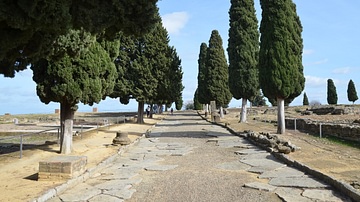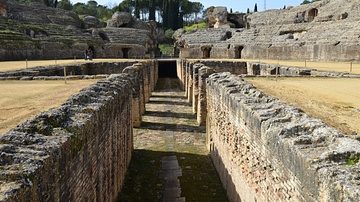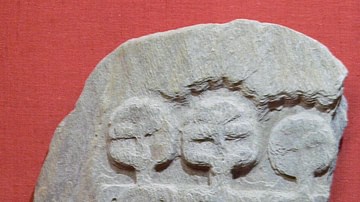Illustration
Mosaic in the House of the Planetarium in Italica (an archaeological site located in modern-day Santiponce, 9 kilometres (5.5 miles) north of Seville in Spain) with busts of the planetary deities who gave their names to the days of the week. In the center is Venus (Friday). Anticlockwise from bottom center are Jupiter (Thursday), Saturn (Saturday), Helios or Sol (Sunday), Luna or Selene (Monday), Mars (Tuesday), and Mercury (Wednesday).
About the Author
Cite This Work
APA Style
Raddato, C. (2021, April 24). Mosaic with Busts of the Planetary Deities, Italica (Spain). World History Encyclopedia. Retrieved from https://www.worldhistory.org/image/13895/mosaic-with-busts-of-the-planetary-deities-italica/
Chicago Style
Raddato, Carole. "Mosaic with Busts of the Planetary Deities, Italica (Spain)." World History Encyclopedia. Last modified April 24, 2021. https://www.worldhistory.org/image/13895/mosaic-with-busts-of-the-planetary-deities-italica/.
MLA Style
Raddato, Carole. "Mosaic with Busts of the Planetary Deities, Italica (Spain)." World History Encyclopedia. World History Encyclopedia, 24 Apr 2021, https://www.worldhistory.org/image/13895/mosaic-with-busts-of-the-planetary-deities-italica/. Web. 16 Apr 2025.








